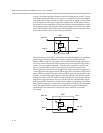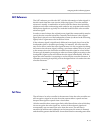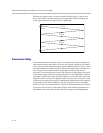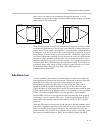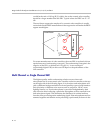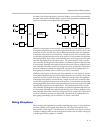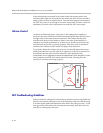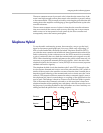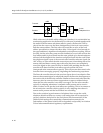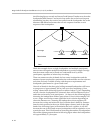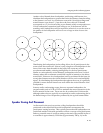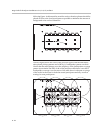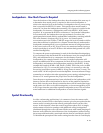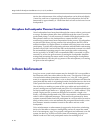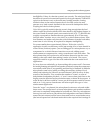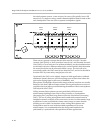
Designing Audio Conferencing Systems
B - 21
Amplifiers
There are two broad classes of amplifiers - low impedance and constant
voltage. The low impedance amplifiers are the type of amplifier used in
consumer applications and the constant voltage amplifiers are used in larger,
professionally installed systems.
Low impedance amplifiers are designed to drive audio into low impedance
loudspeakers typically with impedances between 4 and 16 ohms. These
amplifiers are often used for smaller systems with one, two, three, or four
loudspeakers and are suitable for use in medium to small conference rooms.
In larger systems connecting all the loudspeakers will significantly reduce the
impedance that the amplifier will see - potentially causing the amplifier to
generate more current than it has been designed to provide. As more and more
loudspeakers are connected to a low impedance amplifier, the impedance that
the amplifier sees gets smaller and smaller which requires more and more
current from the amplifier until the amplifier can not produce any more
current and shuts down. In addition, if loudspeakers are removed or added to
the system, they will affect the impedance of the remaining collection of
loudspeakers, perhaps requiring changes to the volume levels to ensure that
the playback signal is loud enough and the amplifier is still operating within
its designed current range.
Constant voltage amplifiers, such as 70 V systems, make it easy to have large
numbers of loudspeakers connected to the system as each loudspeaker can tap
some power from the amplifier (using a transformer that is built into the
loudspeaker) without being concerned as to the overall impedance that the
amplifier sees. Large distributed loudspeaker systems are nearly always
driven by constant voltage amplifiers.
Loudspeakers
Loudspeakers and the amplifier driving the loudspeakers in the local room
allow the local conferencing participants to hear the remote audio. The
loudspeakers can be wall-mounted, ceiling-mounted, or even table-mounted,
although they are most often installed in the ceiling of the local rooms. As
mentioned in the amplifier section, loudspeakers are either low impedance or
'transformer tapped' depending on the style of amplifier they will be
connected to.
Just as microphones are characterized by their pickup pattern, frequency
response, and sensitivity to sound, loudspeakers are characterized by their
frequency response (80 Hz to 20 kHz typical), power capacity (40 to 80 Watts
typical), sensitivity (86 dB SPL @ 1 m typical), and nominal coverage angle (130
degree typical). The loudspeaker coverage angle is defined by the angle where
the loudspeaker levels are no less than 6 dB below the on-axis level. The
following figure shows a typical coverage angle for a ceiling mounted
loudspeaker and illustrates that listeners farther away from the loudspeaker
axis will receive less sound than listeners directly below the loudspeaker. In



